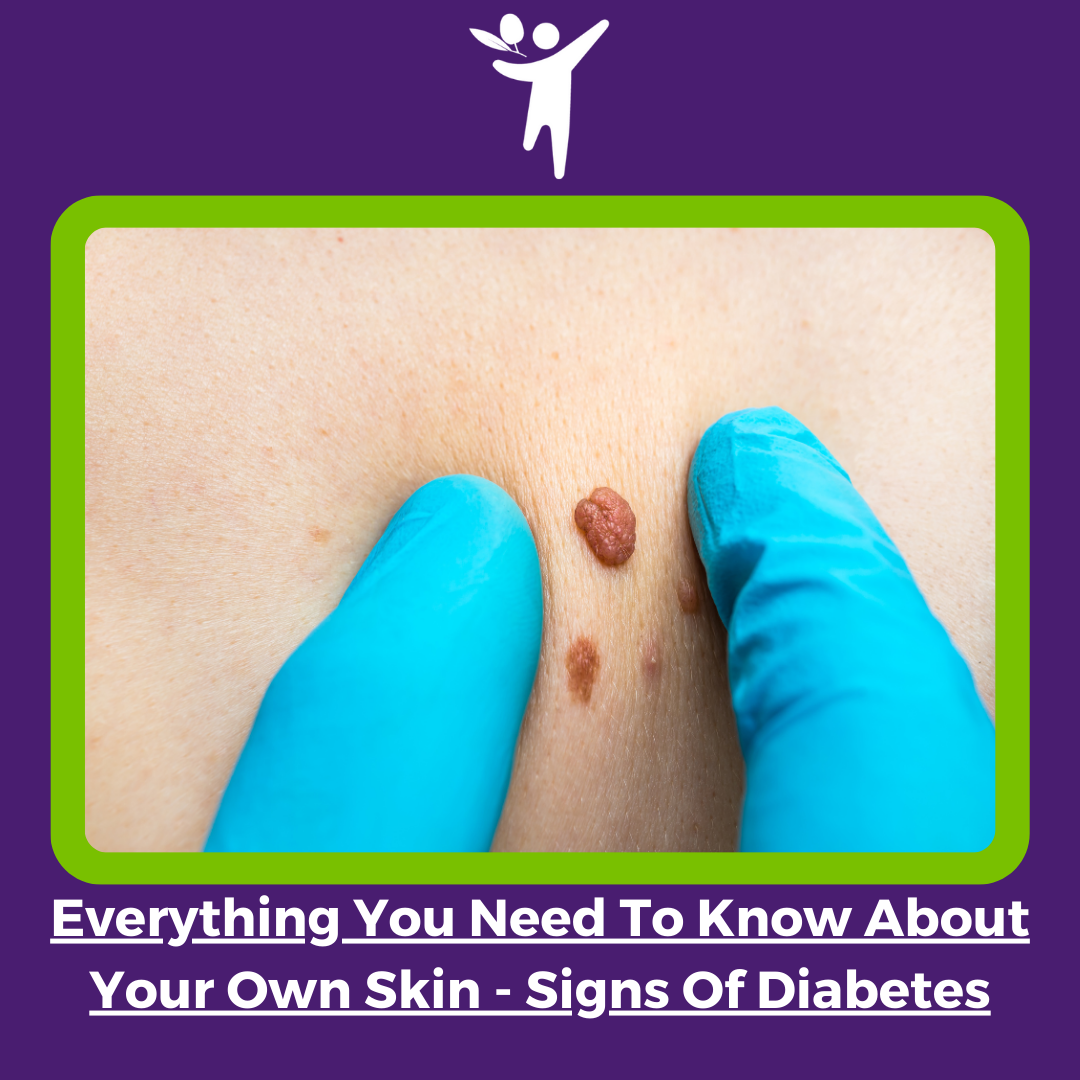Tell-tale signs that you might have diabetes: Everything you need to know about your own skin
Skin problems are often the first visible signs of diabetes, according to the American Diabetes Association (ADA). Type 2 diabetes can make existing skin problems worse, and also cause new ones which most people would overlook as “normal”, but is actually your body telling you to make a change before things deteriorate.

What causes skin complications?
Long-term type 2 diabetes with hyperglycaemia, (high blood glucose) tends to be associated with poor circulation, which reduces blood flow to the skin. It can also cause damage to blood vessels and nerves.
Decreased blood circulation can lead to changes in the skin’s collagen. This changes the skin’s texture, appearance, and ability to heal. Damage to the skin cells can even interfere with your ability to sweat. It can also increase your sensitivity to temperature and pressure.
Speaking of collagen, that takes me to my next point. Skintags! They are small growths that hang off your skin. They’re common and essentially harmless and can be surgically removed if they bother you.
Why do skin tags occur?
Skin tags are made of loose collagen fibers and blood vessels surrounded by skin. Collagen is a type of protein found throughout the body.
Both men and women can develop skin tags. They tend to occur more frequently in older people and (significantly) people who are obese or have prediabetes or type-2 diabetes.
Why do Skin tags matter?
If you have a diet high in carbs and sugars, your insulin will be high as a result. (Insulin controls blood sugar, so more sugar = more insulin). But insulin has numerous actions on the body, one of which is cell proliferation (important for example at puberty, when the body needs to grow rapidly). Uncontrolled cell growth is a bad thing, however, which is why people with type 2 diabetes are more prone to cancer. Skin tags are benign and harmless but they DO indicate that your insulin levels are probably too high. As ever drop us a line with any queries – no pressure – just helpful qualified, professional advice
(Never attempt to remove large skin tags yourself because they’ll bleed heavily.)
Your skin can also become extremely dry and itchy, which is one of the most common signs that you are diabetic.
What causes the itching?
There are several reasons why a person with diabetes might experience more frequent itching than others.
Sometimes, itching can result from damaged nerve fibres in the outer layers of the skin. Often, the cause of diabetes-related itching is diabetic polyneuropathy or peripheral neuropathy. These are complications of diabetes that develop when high blood glucose levels cause damage to nerve fibres, particularly those in the feet and hands.
Before nerve damage starts to occur in people with diabetes, high levels of cytokines circulate the body. These are inflammatory substances that can lead to itching.
Why is it important to see a professional if the itching is constant or painful?
Having itching skin can be harmless, but if it is constant, painful, and shows no sign of healing then you should go and see your GP. Itching is sometimes a sign of uncontrolled blood sugar. If left untreated, there’s a risk of diabetes complications, including:
- nerve damage
- organ damage
- skin conditions
- amputation
Finally, type 2 diabetes can also cause Acanthosis Nigricans which is the medical name for dry, dark patches of skin that usually appear in the armpits, neck, or groin. It could be a sign of an underlying condition, so it needs to be checked by your GP.
What causes Acanthosis Nigricans?
The most common cause of acanthosis nigricans is having raised insulin levels (more about this below) hence it is more common in overweight people.
Other causes include:
- prediabetes or type 2 diabetes
- conditions that affect hormone levels – such as Cushing’s syndrome, polycystic ovary syndrome, or an underactive thyroid
- taking certain medicines – including steroids or hormone treatments like the contraceptive pill
- in rare cases, cancer – usually stomach cancer
- in rare cases, a faulty gene inherited from your parents
Sometimes Acanthosis Nigricans happens in healthy people with no other conditions. This is more common in people with dark skin.
How is Acanthosis Nigracans related to type 2 diabetes?
If you have a diet high in carbs and sugars, your insulin will be high as a result. (Insulin controls blood sugar, so more sugar = more insulin). But insulin has numerous other actions on the body, one of which is cell proliferation (important for example at puberty, when the body grows rapidly). Uncontrolled cell growth is a bad thing, however, which is why people with type 2 diabetes are more prone to cancer. Acanthosis Nigracans is essentially benign and harmless but it DOES indicate that your insulin levels are probably too high. The raised insulin (called hyperinsulinemia) causes proliferation of the surface of the skin as well as excess melatonin production. Hence the thickening and darkening of the skin.
What can ProLongevity do to help?
We want you to live a long, happy, and healthy life. So please remember that while some health issues are treatable, prevention is much more effective. If you take care of yourself today, you’ll reap the rewards over the next 10, 20 maybe 50 years!





